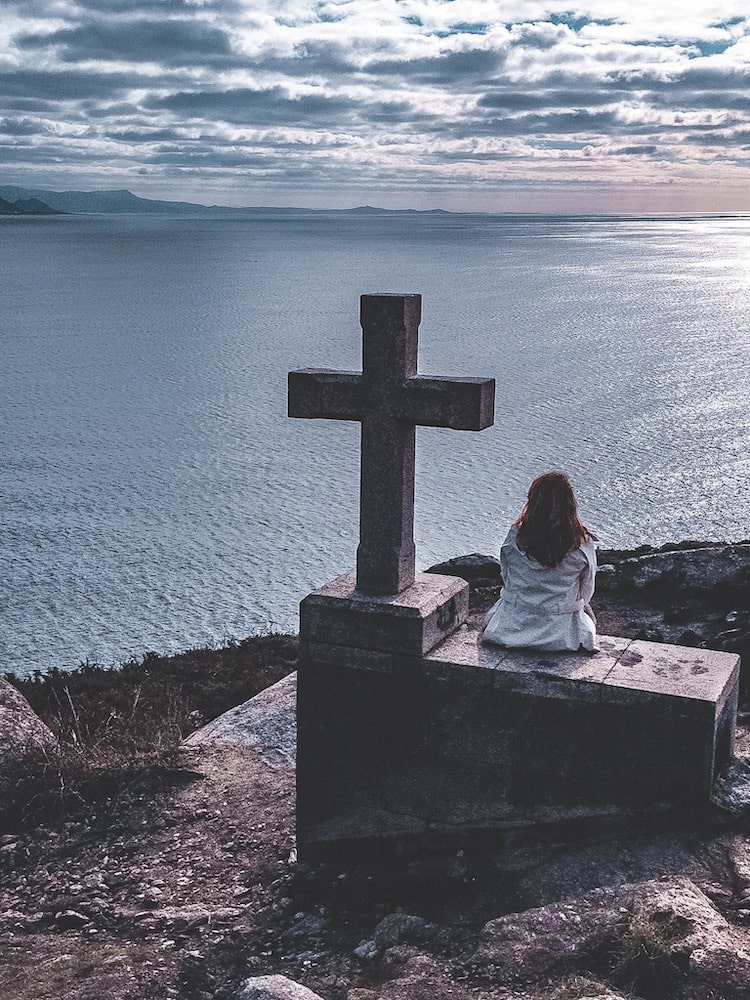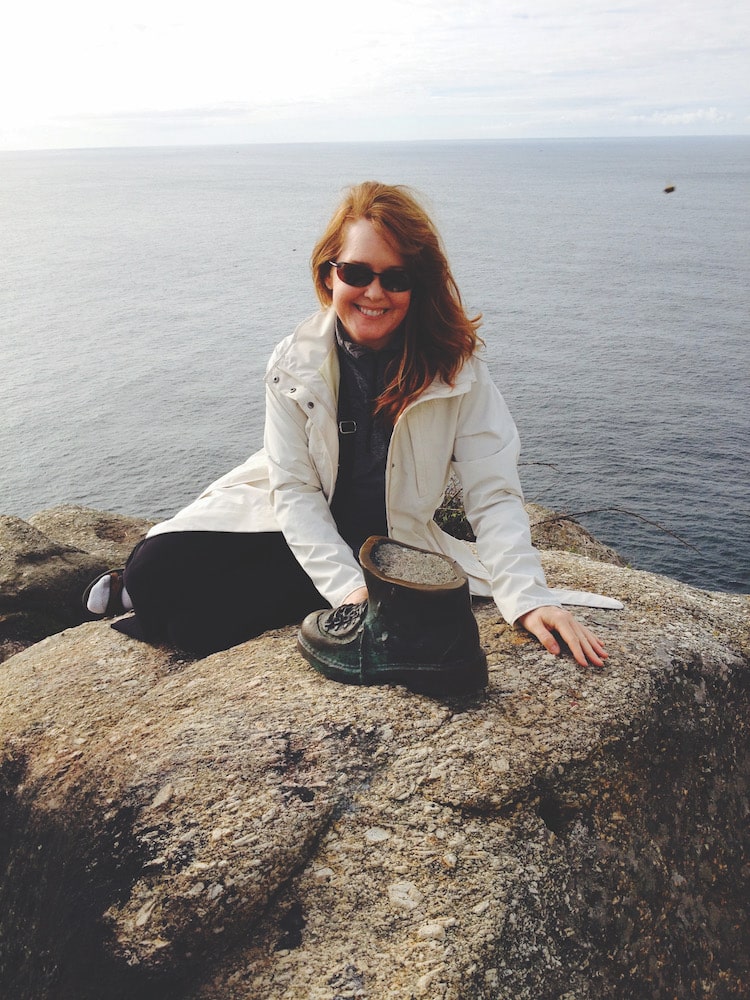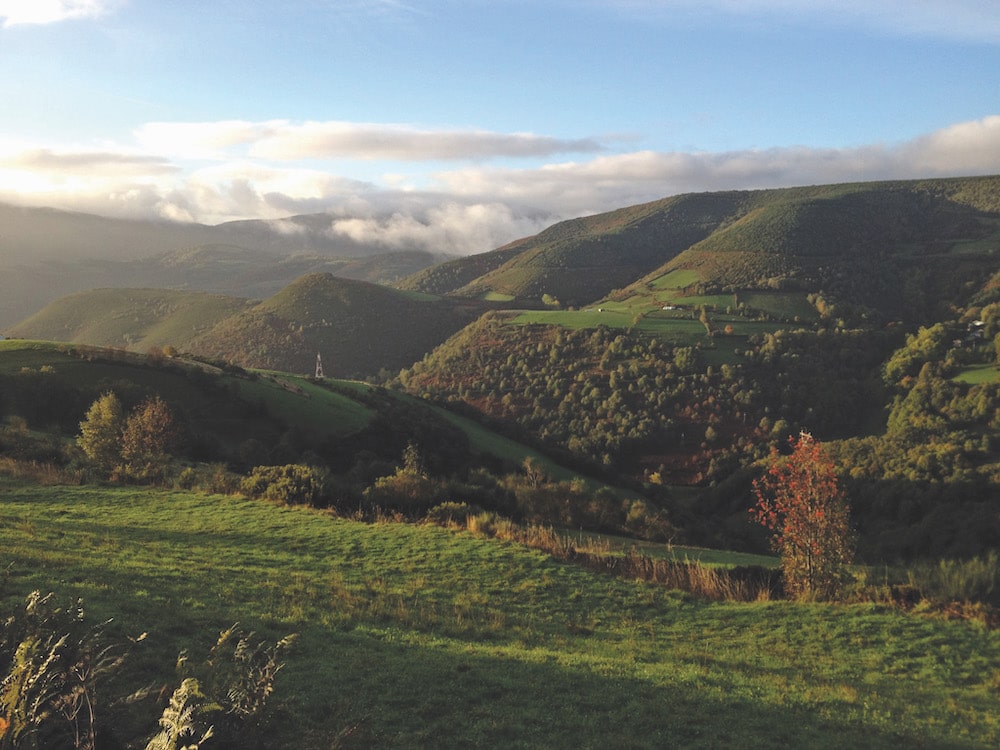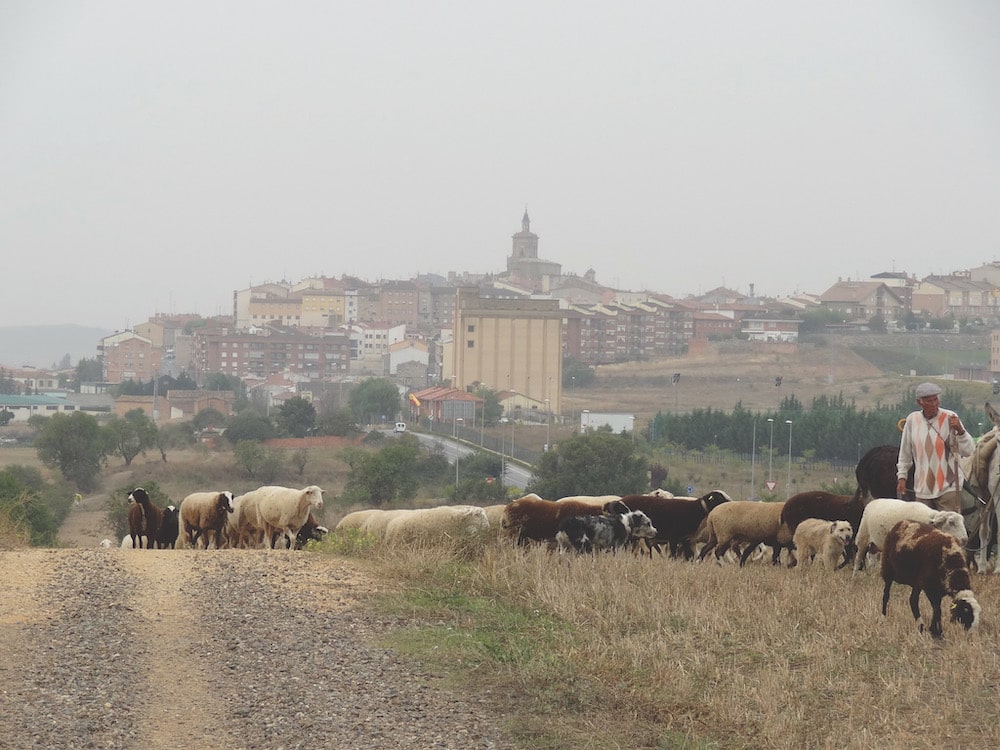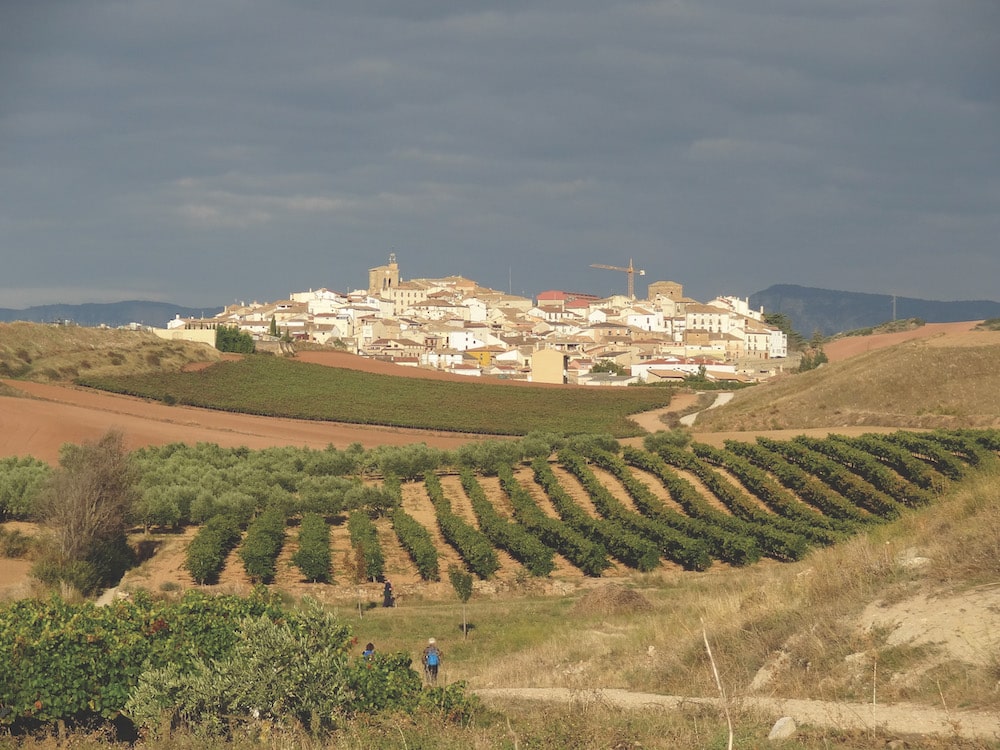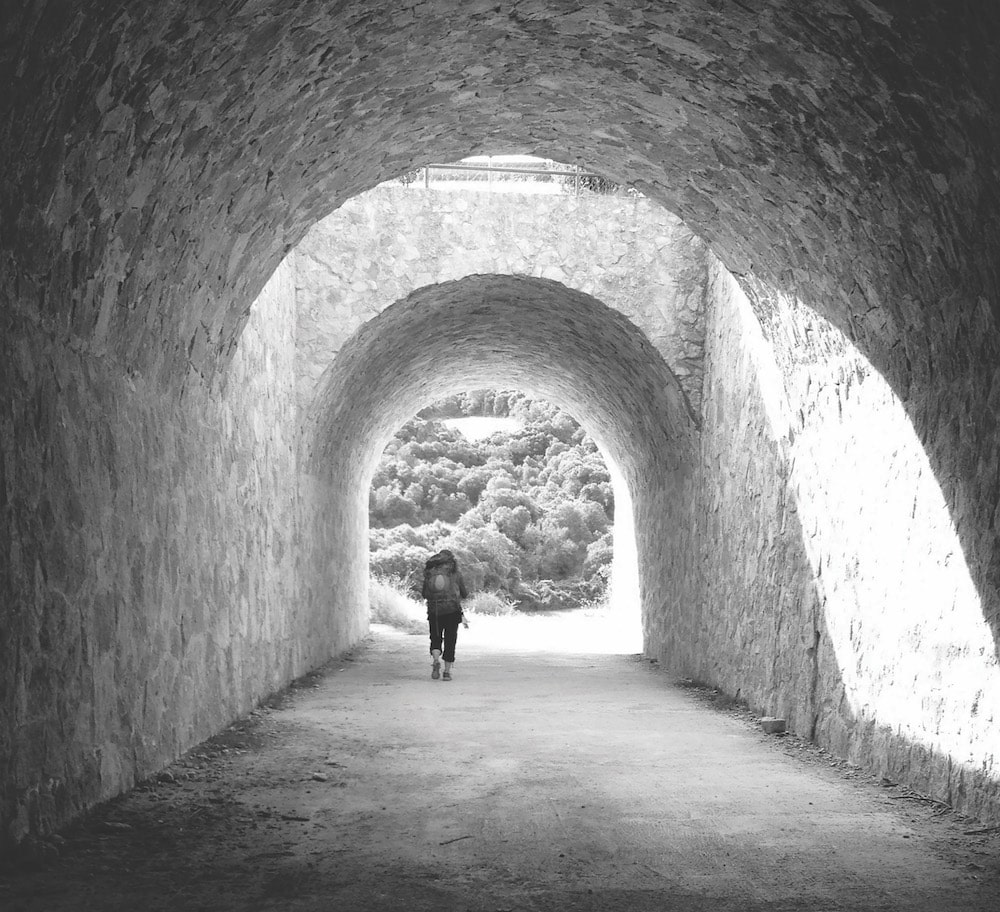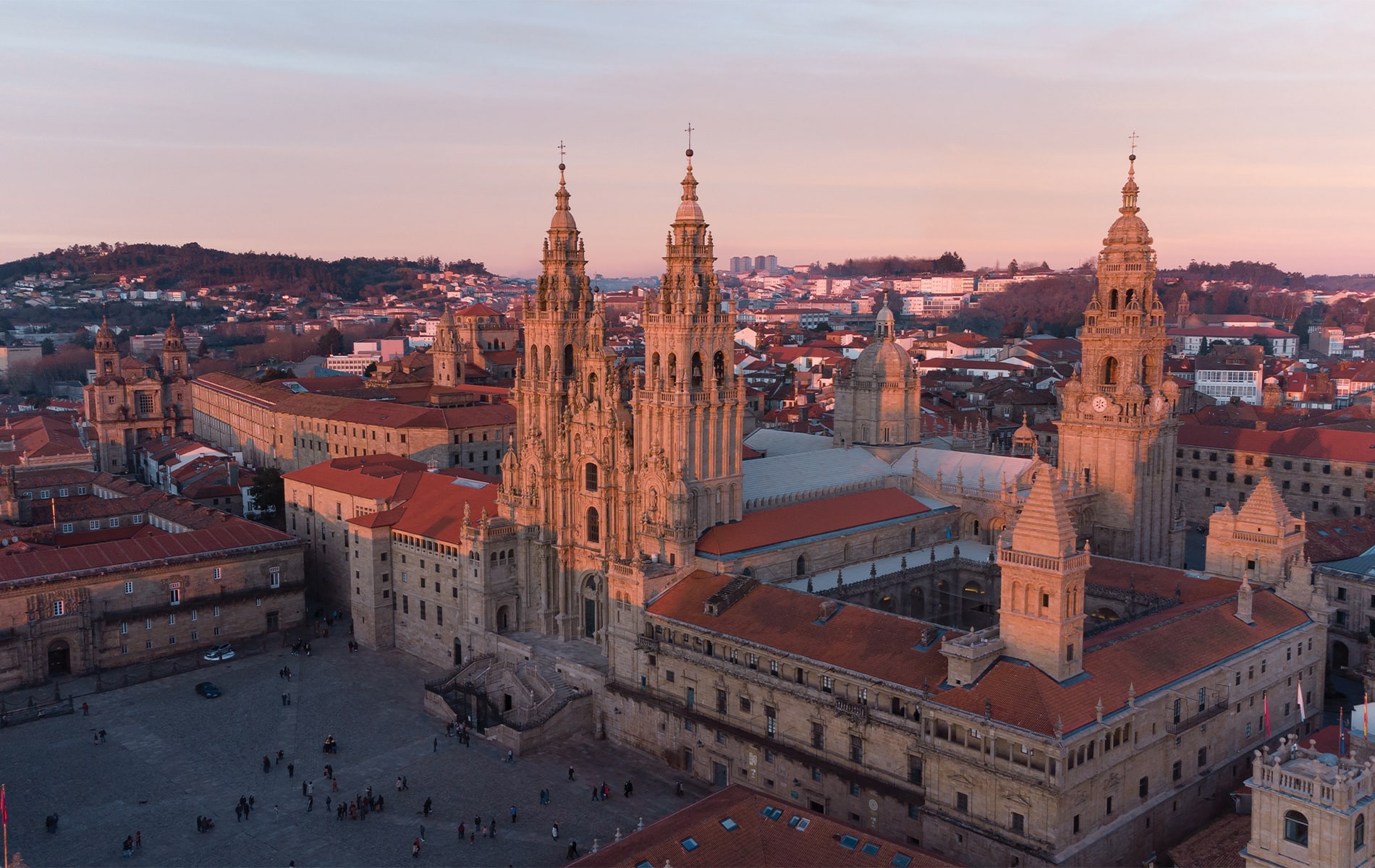
vie-magazine-camino-concierge-travel-agency-hero-min
The cathedral in Santiago de Compostela, Spain, where the Camino de Santiago pilgrimage ends | Photo by Iago Viana Gonzalez/Shutterstock
Through the Tunnel
Seekers Find Healing on Medieval Pilgrimage
Interview by Wendy Anderson | Photography courtesy of Camino Concierge
Ever since the first known pilgrim traversed the Spanish countryside to visit the burial place of St. James in Santiago de Compostela in the year 950, travelers have been making pilgrimages to the same location. Over a millennium later, this medieval tradition continues to gain popularity as modern-day trekkers tout its ability to inspire personal growth and healing.
VIE asked Michelle Lessard, founder of the Camino Concierge travel agency, about her experience on the Camino de Santiago and why she’s passionate about helping others undertake this powerful journey.
VIE: How did you initially get involved in the Camino de Santiago?
Michelle Lessard: I lived in the UK for several years and traveled to Spain on business, so I first heard about the Camino there. In 2013, after living back in the US, I found myself at a point where I was praying for some answers about struggles in my life. Suddenly, a number of things converged, including promptings about the Camino and availability in my schedule, provided I went right away. I didn’t think everything I would need—such as an international flight—could come together in three days, but I told God I would go if they did.
Not only did the flight come through, but when I was in the REI store in Phoenix, Arizona, feeling utterly overwhelmed by the huge selection of backpacks and hiking gear, it just so happened that an employee had walked the Camino. She walked me through every detail. This was my first experience with a “Camino angel,” the term pilgrims use for someone who suddenly crosses your path to help you on your journey. Three days later, I was in Europe.
VIE: Give us a brief overview of what the Camino de Santiago involves.
ML: The Camino de Santiago—Spanish for “The Way of St. James”—is a journey that follows ancient pilgrim pathways to the city of Santiago de Compostela, where a cathedral was built after the remains of James, one of Christ’s original apostles, were moved there in the ninth century. I took the most popular of several routes, the French Way, which starts in Saint John Pied de Port and traverses 800 kilometers (500 miles) over thirty-three days. Those who don’t have that much time opt for shorter routes.
What differentiates the Camino from other through-hikes, including the Appalachian Trail and Pacific Crest Trail, is that it is also a spiritual pilgrimage. Those who embark on it expect a profound inner benefit during the experience. Most are Christians of various backgrounds, with the churches along the way having particular meaning to members of the Catholic Church, but many make the trek who do not follow a specific faith.
VIE: You’ve traveled widely. What about this experience made it so personally beneficial?
ML: The Camino is unique because it’s such an all-encompassing experience. You experience so much of life—many ups, downs, joys, and sorrows. I went in with an open mind, which is very important, and it gave me an incredible opportunity to grow mentally, emotionally, spiritually, and in physical strength. One goes into the Camino as one person and comes out as another.
VIE: What does it take physically to walk 500 miles?
ML: Pushing oneself physically to walk about fifteen miles a day in all kinds of weather is a major part of the experience. But you don’t have to be a super athlete. With only three days to prepare, I hadn’t trained physically—and the beginning of the French Way requires hiking uphill over the Pyrenees! Compeed pads (a Spanish product superior to Band-Aids) and duct tape are essential for blisters, and I had to buy new shoes when my feet flattened.
But the body really becomes strong. After about ten days, I found myself in a fluid, natural motion with my walking poles (another essential item for downhill portions of the hike) and with an empowering newfound feeling of strength.
I walked with one gentleman on his seventh Camino at ninety-two years young! Officials who certify the routes also recognize pilgrimages made by bicycle, horseback, wheelchair, and even sailboat.
VIE: What was it like to undertake the journey alone? Tell us about the people you met.
ML: One of the most powerful parts of my journey was having time alone to think and to pray as I walked. The Camino covers many agricultural areas, and many villages are closed when the workers are in the fields, during siesta time, or on Sundays. The days I hiked alone forced me to face myself and tackle something I was grappling with.
However, a massive component of the Camino is interacting with others from all over the world. I came to cherish the communal aspect of the evenings. Because of our different paces, I didn’t see the same people every day, but I got to know about fifty I saw repeatedly over the month. Being away from news media and meeting real people made the world seem more connected and helped increase my faith in humanity! I learned that people worldwide are more alike than different—we all hold the same challenges, dreams, and sorrows.
You learn three things about your fellow travelers: their first name, nationality, and the reason for their journey. Each pilgrim must define their motivation for walking—you state it when you register at the end in Santiago—and it’s something everyone talks about on the way. Some said their reasons were physical, such as losing weight, but most sought something deeper. A lot of people came because they felt broken or at an impasse. One man was grieving the loss of his daughter; another was processing the recent loss of six of her friends. Everyone encourages each other in their outward and inward pilgrimages.
Camino Concierge is about empowering travelers and simplifying the process to leave mental and emotional room for personal growth.
VIE: What else can you tell us about the inner aspects of the journey?
ML: Traditions have developed that facilitate personal growth. One of these is bringing a rock from one’s hometown to deposit along the way. Many leave this rock at the highest point, Cruz de Ferro, symbolizing leaving one’s burden at the cross. It can be a powerfully moving experience. Because everyone processes at his or her own rate, many crosses along the way were covered with rocks as visual pictures of personal and spiritual growth.
My reason for traveling was to learn more about love—including God’s love and self-love. Both became a reality to me. The highlight of my journey was an intense experience where I had an overwhelming feeling of being filled with the love of God. Each traveler takes home a unique experience.
VIE: Where did you sleep? And what was the food like?
ML: With over 400,000 travelers participating each year, a network of hostels called alburgues has developed. Some offer food and drink from a combination café-bar, and all provide overnight accommodation. For those used to luxury, sleeping on bunk beds in a communal room is part of voluntarily embracing the physical challenge of the Camino. But no actual camping is required. You quickly develop a nightly ritual: washing clothes, inserting newspaper in hiking boots to help them dry, partaking in the traditional pilgrim dinner, and, of course, drinking wine. The dinner includes a lot of pasta, potatoes, and bread—carbs are essential with all that walking!—plus meat slices and cheese.
Spain offers exquisite cuisine that varies as you progress west, so in larger towns and cities, I ate at restaurants to sample the local flavors of the provinces we were passing through. Rioja is known for its red wine. Galicia, in the northwest corner of Spain, bears a remarkable resemblance to Ireland, with rolling green hills, sheep, and a coastal, Celtic-influenced culture, so I had to try its famous seafood. Because the bunk rooms could be noisy, I opted for a small local bed-and-breakfast or hotel every three or four nights to catch up on sleep. One night, I treated myself to a luxury hotel, the Parador in León, after seeing it in the movie The Way with Martin Sheen. The bubble bath was blissful!
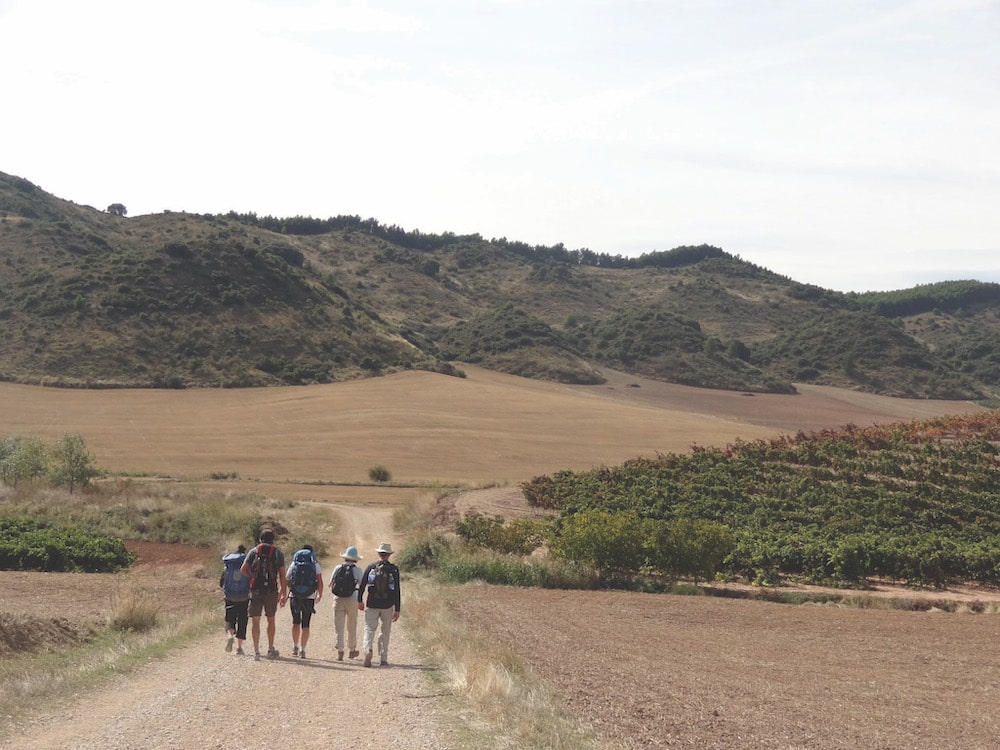
Over 400,000 people participate in the Camino yearly, and making friends along the way is a highlight of the journey for many.
VIE: What caused you to start Camino Concierge to focus on the Camino?
ML: I’m passionate about helping others experience the empowerment, spiritual growth, and connection to other cultures that the Camino offers, which goes beyond what a typical vacation provides. My goal is to help prepare English-speaking travelers to get the most out of their journeys.
Many Americans are not experienced in traveling overseas, or they’ve only gone in large groups. I’ve seen future pilgrims make mistakes that better advice would have prevented. One of these is overpreparing: some people try to control every contingency and end up too rigid, hindering their opportunity to experience the blessing of unplanned events and to receive help from others. Another problem is fear—of the unknown, traveling alone, or the change required.
Camino Concierge is designed to alleviate these fears and to be a one-stop shop for advice. When I went, there was one English-language guidebook and an online forum with fifty different answers to a question—making it more confusing than helpful! Now, resources have proliferated to the point where the over-abundance of information has become daunting. CC is about empowering travelers and simplifying the process to leave mental and emotional room for personal growth.
VIE: Thank you!
— V —
For more information or to plan your trip, visit CaminoConcierge.com.
Share This Story!
KEEP UP WITH THE LATEST STORIES FROM VIE



